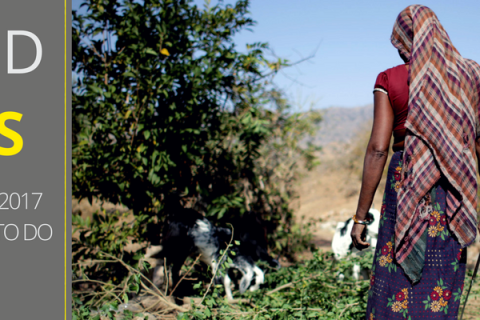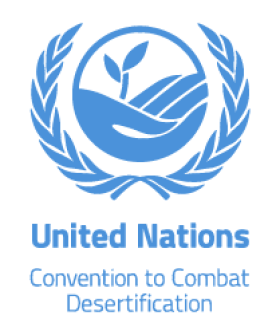
Proportion of land that is degraded over total land area
Last updated on 1 February 2022
This indicator is currently classified as Tier I. The United Nations Convention to Combat Desertification (UNCCD) is the Custodian agency for this indicator. Food and Agriculture Organization of the United Nations (FAO) and the United Nations Environment Programme (UNEP) are partner agencies.
Unit of measure: Proportion of land that is degraded over total land area (%)
Why is this indicator important?
Food production, extractive industries, or the expansion of infrastructure increase pressure on arable lands, pastures, forestry, and other essential areas. In turn, land degradation has negative effects on ecosystems, farm yields, and the quantity and quality of water resources. As a consequence, food insecurity may rise and facilitate migration and urbanization.
To assess the extent of land degradation is important for tracking progress towards voluntary Land Degradation Neutrality (LDN) targets and for the development of plans of action to redress degradation, including through the conservation, sustainable management, rehabilitation and restoration of land resources.
How is the indicator measured and monitored?
According to the metadata document, the indicator uses a binary classification (degraded or not degraded) drawing on the three sub-indicators that assess trends in land cover, in land productivity, and in carbon stocks above and below ground. Any significant decrease or negative change in one of the three is considered to compromise land degradation. Land degradation is defined the reduction or loss of the biological or economic productivity and complexity of rain fed cropland, irrigated cropland, or range, pasture, forest and woodlands resulting from a combination of pressures, including land use and management practices. (UNCCD 1994, Article 1).
Since 2018, data is collected every four years through UNCCD’s national reporting and review process. Data sources include databases, maps, reports provided by ministries or agencies along with national statistical offices, as well as remote sensing, such Earth Observation data sources, that are disaggregated to national level. The Good Practices Guidance for SDG Indicator 15.3.1, version 2.0 provides a detail overview on monitoring and computation. The main limitations include the availability of historical time series and the, as of yet, often limited national capacities to process, interpret, and validate geospatial data.
By Anne Hennings, peer-reviewed by UNCCD.
Official indicator data
The proportion of land that is degraded draws on three sub-indicators: Land productivity, land cover, and soil organic carbon.
* Select "year" below to see the most recent data for more countries.
Other related indicators on Land Portal
In addition to the official indicator data, the following indicators provide information concerning land under organic agriculture and the enforcement of land use restrictions in rural areas.
| Indicator | Min-Max Number of years |
Countries / Obs | Min / Max Value |
|---|---|---|---|
| Agricultural area certified organic | |||
| Agriculture area under organic agric. | |||
| Restrictions regarding rural land use are enforced |
Land Degradation Neutrality in Small Island Developing States. Briefing Note
Many Small Island Developing States (SIDS) have committed to establishing national voluntary LDN targets. By establishing LDN targets, SIDS have defined their ambitions and key priorities to address land degradation.
Land Degradation Neutrality in Small Island Developing States. Technical report
Small Island Developing States (SIDS) are continuously under the threat from the adverse effects of climate change and land degradation impacts. Erratic climatic patterns have made daily weather previsions unreliable and are becoming a challenge for communities to take appropriate timely and preventive measures.
Strengthening Land Degradation Neutrality data and decision-making through free and open access platforms
Land degradation – the reduction or loss of the productive potential of land – is a global challenge. Over 20% of the Earth’s vegetated surface is estimated to be degraded, affecting over 1.3 billion people, with an economic impact of up to US$10.6 trillion.
Review of Publicly Available Geospatial Datasets and Indicators In Support of Land Degradation Monitoring
Land degradation – the reduction or loss of the productive potential of land – is a global challenge. Over 20% of the Earth’s vegetated surface is estimated to be degraded, affecting over 1.3 billion people, with an economic impact of up to US$10.6 trillion.
Land Degradation Neutrality Fund. LDN Impact Monitoring Methodology. Technical Document
As investments in nature are needed more than ever, and are increasingly gaining traction, the challenge is to identify environmental and social risks and to demonstrate positive impacts associated with investing in nature-based projects in a standardized and comparable manner.
Pagination
Worldwide Land Degradation and Restoration Assessment Report: A Primer
- World's fist comprehensive evidence-based assessment report on land degradation will be launched in March 2018
- Best-available evidence for decision makers to make informed decisions to halt & reverse land degradation
- Prepared by more than 100 leading international experts from 45 countries over 3 years
- Draws on more than 3,000 scientific papers, Government reports, indigenous and local knowledge & other sources
- Improved by over 7,300 comments from more than 200 external reviewers, including Governments
- Examines implications of land d
Loss of Fertile Land Fuels Crisis Across Africa
Climate change, soil degradation and rising wealth are shrinking the amount of usable land in Africa. But the number of people who need it is rising fast.
By Jeffrey Gettleman
LAIKIPIA, Kenya — The two elders, wearing weather-beaten cowboy hats with the strings cinched under their chins, stood at the edge of an empty farm, covering their mouths in disbelief.
The Climate Crisis, Global Land Use, and Human Rights
On September 27th, the Columbia Center on Sustainable Investment (CCSI), Sabin Center for Climate Change Law, Landesa, and Wake Forest Law School will be hosting a day-long conference on the intersection between land use, the climate crisis and clean energy transition, and human rights.
Land and the SDGs: Key takeaways from the 2017 HLPF and what we need to do next
By Luca Chinotti, Global Policy Advisor, International Land Coalition (ILC)
Without People-Centred Land Governance, governments will not be able to achieve the Sustainable Development Goals (SDGs). In fact, if we fail to secure and protect land rights, for those who live on and from the land, it will be impossible...
No SDGs without major progress on land
Pagination
![]()

By 2030, combat desertification, restore degraded land and soil, including land affected by desertification, drought and floods, and strive to achieve a land degradation-neutral world
Indicator details
The Indicator is conceptually clear, has an internationally established and available methodology and standards, and that data is regularly produced by countries for at least 50 per cent of countries and of the population in every region where the indicator is relevant.
Key dates:








